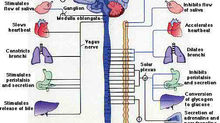NLP Collapse Anchor in Hypnotherapy
- Sheffield City Hypnotherapy
- Jul 19, 2015
- 2 min read
Today we are going to have a look at a highly effective technique which has its origins in NLP although is used frequently during hypnotherapy; the collapse anchor. This is employed when we need to get rid of an unwanted response to a situation or event. Firstly the feeling which we would like to replace the unwanted feeling must be identified, this is done by 'stepping in' to a past event in which the positive feeling dominated and attaching it to an anchor. This anchor must first be consolidated by testing and making sure it is powerful enough before moving onto the collapse anchor, of which it is an integral part, often we use the motion of pinching the thumb and forefinger together on the dominant hand as its trigger. Because of this preparation, a collapse anchor is usually done over two sessions. For a review of hypnotic anchors see our post in March 2014 via the archive.
Once the initial anchor is set, we are ready to proceed. Test the anchor, then change state by moving to a tranquil place mentally, or by shifting position, generally moving your mind away from the process we are engaged in. We then imagine the situation in which we are experiencing the negative feelings and channel these feelings from wherever we are physically experiencing them within the body. This feeling is moved over to and down the arms and is concentrated in the hand of the non-dominant hand by clenching it into a fist. The harder the fist is clenched the more concentrated the negative feeling become. Break state again, and revisit this fist clenching procedure so it becomes easier to manifest with each testing.
The third stage involves using both anchors. As the fist is made, concentrating the negative emotion there, the hand is then opened while the postive anchor is fired by pinching the thumb and forefinger together on the opposite hand, allow both to exist together for around thirty seconds. Break state and repeat. Each time the process is repeated the negative feelings will diminsh and be replaced with the feelings attached to the positive anchor. Mild confusion may result temporarily while the mind integrates the two anchors. Subsequent exposure to the situation should result in a positive emotional reaction, with the old negative reaction removed.
As a side note, when setting both types of anchor, it is important the situations are revisited and imagined in the first person and that attnetion is paid to all the stimulus of that situation; the colours, movement, sounds and so on. Important that this is a vivid as possible so that the association between the feeling and anchor is as strong as possible.
Enjoy.
www.sheffieldcityhypnotherapy.co.uk









Comments